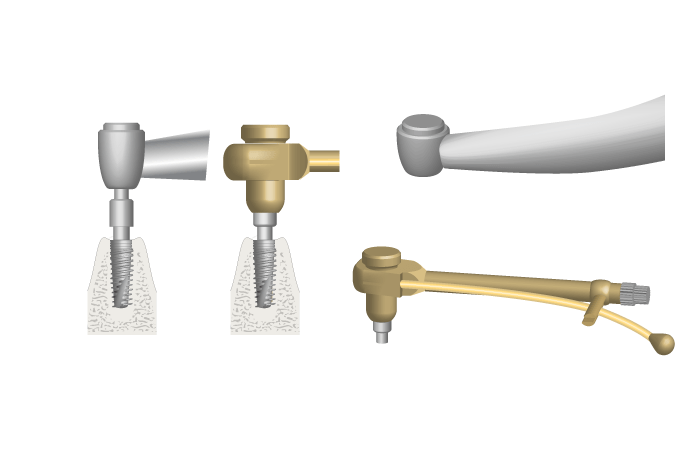-
0
Patient Assessment
- 0.1 Patient demand
- 0.2 Overarching considerations
- 0.3 Local history
- 0.4 Anatomical location
- 0.5 General patient history
-
0.6
Risk assessment & special high risk categories
- 5.1 Risk assessment & special high risk categories
- 5.2 age
- 5.3 Compliance
- 5.4 Smoking
- 5.5 Drug abuse
- 5.6 Recreational drugs and alcohol abuse
- 5.7 Parafunctions
- 5.8 Diabetes
- 5.9 Osteoporosis
- 5.10 Coagulation disorders and anticoagulant therapy
- 5.11 Steroids
- 5.12 Bisphosphonates
- 5.13 BRONJ / ARONJ
- 5.14 Radiotherapy
- 5.15 Risk factors
-
1
Diagnostics
-
1.1
Clinical Assessment
- 0.1 Lip line
- 0.2 Mouth opening
- 0.3 Vertical dimension
- 0.4 Maxillo-mandibular relationship
- 0.5 TMD
- 0.6 Existing prosthesis
- 0.7 Muco-gingival junction
- 0.8 Hyposalivation and Xerostomia
- 1.2 Clinical findings
-
1.3
Clinical diagnostic assessments
- 2.1 Microbiology
- 2.2 Salivary output
-
1.4
Diagnostic imaging
- 3.1 Imaging overview
- 3.2 Intraoral radiographs
- 3.3 Panoramic
- 3.4 CBCT
- 3.5 CT
- 1.5 Diagnostic prosthodontic guides
-
1.1
Clinical Assessment
-
2
Treatment Options
- 2.1 Mucosally-supported
-
2.2
Implant-retained/supported, general
- 1.1 Prosthodontic options overview
- 1.2 Number of implants maxilla and mandible
- 1.3 Time to function
- 1.4 Submerged or non-submerged
- 1.5 Soft tissue management
- 1.6 Hard tissue management, mandible
- 1.7 Hard tissue management, maxilla
- 1.8 Need for grafting
- 1.9 Healed vs fresh extraction socket
- 1.10 Digital treatment planning protocols
- 2.3 Implant prosthetics - removable
-
2.4
Implant prosthetics - fixed
- 2.5 Comprehensive treatment concepts
-
3
Treatment Procedures
-
3.1
Surgical
-
3.2
Removable prosthetics
-
3.3
Fixed prosthetics
-
3.1
Surgical
- 4 Aftercare
Placement of implants - Torque
Key points
- Torque can be measured by hand piece or torque wrench
- Insertion torque describes the force necessary for implant insertion
- Insertion torque is an objective surrogate measure for primary implant stability
Insertion torque level as a factor of implant success
Insertion torque represents the resistance of bone during implant placement. Since too low a torque corresponds to low initial mechanical implant stability and too high torque levels lead to avascular periimplant bone necrosis, implant insertion torque should be carefully monitored and controlled.
Insertion torque and implant stability
Primary stability can be defined as an absence of clinically detectable implant mobility in the implant bed. Primary stability is mandatory for osseointegration and implant success. An objective surrogate measure of primary stability is the specification of the applied torque (Ncm) during the progress of implant insertion. Torque depends on bone and implant parameters such as bone density, site preparation/drill protocol, implant diameter and implant design. Reports in the scientific literature show that torque levels which are too low or too high can be associated with implant failure. Insertion torques above 50 Ncm are unfavorable due to excessive compressive stresses applied to the bone surrounding the implant. Compressive stress leads to vessel obstruction which can limit periimplant bone perfusion and induce bone necrosis. On the other hand, insertion torque should exceed a minimum of torque measuring 30 Ncm. In situations of torque levels lower than 30 Ncm an unloaded healing period of 4-6 months is recommended to enable osseointegration. According to some studies minimal insertion torque of 40 Ncm seems to be one of the prerequisites for a successful immediate loading procedure. However, no conclusive evidence as to the minimum or maximum insertion torque for different loading concepts to prevent implant failure exists.
Techniques to determine insertion torque
Torque levels can be evaluated during the insertion progress with help of a drilling unit especially designed for torque documentation (Figure 1a) or by use of manual torque wrenches (Figure 1b). Both systems can measure torque levels during implant insertion. The application of a drilling unit is user-friendly due to continuous automatic torque monitoring. However, drilling units enabling torque-controlled implant insertion are not appropriate to evaluate torque levels in bone of low density.


